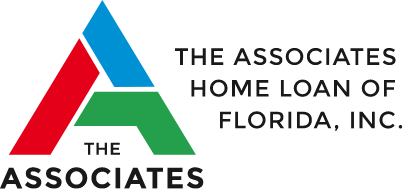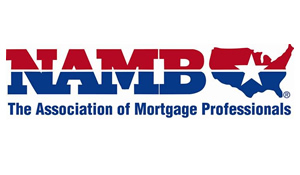
How Long Does It Take to Refinance a House?
Preparing to refinance your home in hopes of a better interest rate? Understanding each step of the refinancing process—from locking in a rate to closing—can help speed up the journey and help avoid hiccups down the road.
The answer to the question, “How long does it take to refinance a house?” will differ for every person, but most people follow the same general steps. Let’s discuss each of those steps and cover a few tips for avoiding common mistakes that can drag down the timeline.
How long does it take to refinance a house?
When you decide to refinance your home, you’re essentially swapping out your current loan with a new one. Ideally, the new loan will have better terms than your original. Term length and monthly payments may shift to extend or decrease the life of your loan.
This can be a boon to many homeowners because it decreases the amount you spend on your home over time. It can also shorten the length of your mortgage if you want to pay it off quicker, or increase the length if you want to make lower monthly payments.
But how long does it take to refinance a house? A refinance typically takes anywhere from 30-45 days. However, it can be a bit shorter or longer, depending on your situation and the lender you work with.
Factors that can influence the timeline include having the proper documentation ready, the length of the underwriting process, and even the time of year.
If your property is small and your finances are relatively straightforward, you may wrap up the refinancing process in just a few weeks. However, larger properties or applicants with more complicated financial situations may face a longer process.
Steps in the Refinancing Process
If you remember getting your original mortgage, the refinancing process is similar to that. But if your memory is fuzzy or you got your mortgage a few decades ago, let’s go over each step individually and talk about how long they take.
1. Shop Around
First, look at your lending options to see what kind of loans and rates may be available to you. Keep these factors in mind:
- Refinancing type. Cash-out and rate-and-term refinances are the most popular.
- Term. This is the length of your new loan.
- Type of loan. Your loan may be a fixed-rate or adjustable-rate mortgage.
- Rate. What are the lowest interest rates available right now?
- Closing costs. These include lender fees, property-related fees, third-party fees.
Even if you think you’ve found the best lender right away, don’t rush this step—make sure you understand all of the options available to you.
Once you’ve found a lender that you like, ask for an official loan estimate. This estimate will help you understand all of the costs, risks, and features of the new loan.
2. Lock In Your Rate
Once you’ve picked your lender, it’s time to lock in a good rate. When you ‘lock in’ a rate, it means the lender promises to honor the rates from that day, even if rates start increasing soon after that. Locking in your mortgage rates protects you from daily or seasonal fluctuations of the housing market.
Even after locking in a refinance rate, you still have the flexibility to do a few things:
- Pick a new loan
- Decide to pay points or take credits, or change your mind
- Make changes to your application, like adding a co-borrower to the paperwork
The lock-in process doesn’t take much time. It should only take a day since you’ll have committed to that day’s rate.
3. Provide Documentation
With your rate locked in, it’s time to get to work to make this loan a reality. You’ll need to do some work first and hand off your documentation to your lender for their portion of the heavy lifting.
Typically, a lender will ask you for:
- Two years of 1099s or W2s
- Two years of tax returns
- Two years of your business’ tax returns (if you’re 25% owner or above)
- Two months of bank statements
- Proof of child support payments/alimony
Sometimes, they’ll ask you to link your bank accounts and documents digitally. Other times, they may ask for these documents in-person or via email.
The faster you can compile and send all your documents, the faster this process will be. It’s a good idea to start collecting these as soon as possible.
4. Underwriting Process
Once the lender has all the documents they need, they’ll review everything and verify all of your assets, income, debt, and property details.
For some lenders, this process takes less than three days. For other lenders or applicants with complicated property or financial details, the underwriting process can take much longer—up to three weeks. If you’re concerned about the timing of this stage, don’t be afraid to ask your lender about their estimated timeline.
5. Final Approval & Closing
Before closing, the lender will go over everything one last time and check that even the smallest details are in order. Once they give the final approval, the underwriting process is officially complete, and you’ll be ready to close. This should only take a few days.
With the loan finalized, you’ll need to show up to your closing appointment to review and sign all the necessary documents while they fund the loan. After that, you’re good to go with your new, lower interest rate!
How To Speed Up The Process
Want to start paying off your new loan faster? While much of the refinancing process is out of your hands, there are a few things you can do to speed up the process.
Make Sure You Qualify Before Applying
In some circumstances, you may not qualify for refinancing, meaning you’ll end up wasting your time applying for it. Factors that could disqualify you include:
- Having a credit score that’s too low
- Having a debt-to-income ratio that’s higher than what a lender will accept (be sure to inquire about this before applying if you’re not sure)
- Not having enough equity in your home (you may not be able to refinance if you’ve owned your home for just a few months)
Pre-Prepare Your Documents
Whoever your lender is, they’re going to ask for a particular set of documents. As you shop around, begin compiling things like your tax returns and pay stubs to avoid any slowdowns.
Get Started on Your Refinance
The refinancing process may seem like it’ll take forever—but rest assured that it’ll wrap up sooner than you think.
If you’re paying a loan with interest rates that are too high or want the opportunity to renegotiate the terms of your mortgage, start your refinance today. Contact our team at Associates Home Loan to learn more.
Recent Posts
Hard Money Loan Interest Rates: A Closer Look
What do you think when you hear “hard money loan?” If you think of successful business deals leading to cash profits, then you wouldn’t be far off. While this loan is an excellent financing dealRead More
The Pros and Cons of Bridge Loans
It should come as no surprise that the most significant concern today for home buyers is affordability. Inflation has caused rising home prices, and many feel that owning a home is untenable, and mortgage interestRead More
Associates Home Loan’s Grants For Adoption
The road to adoption is often winding and steep, with financial hurdles that seem insurmountable for many hopeful parents. Here enters our hero: grants for adoption designed not just with dollars and cents in mindRead More









